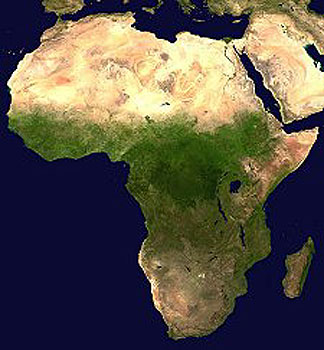The Clean Development Mechanism (CDM) has already failed Africa, some observers believe, so why bother post-2012 when the existing CDM framework established under the Kyoto Protocol expires?
But as the international community prepares to negotiate a new climate pact, we should care about extending the CDM, and care a great deal.
After all, the CDM was created with the dual goals of promoting sustainable development in developing countries and reducing costs of compliance in regards to greenhouse gas (GHG) emissions in rich countries. In the early years of the CDM, the market rewarded the lowest hanging fruit — reductions in industrial facilities in countries where there were already well-established investment environments and where government institutions were relatively well developed. It’s no surprise then that most of the early projects were in Brazil, Mexico, Chile, South Africa, Malaysia and China.
Today the CDM has broadened to reach over 50 countries worldwide, including African nations like Uganda, Tanzania, Nigeria, Morocco, Egypt, and Tunisia. But we need to improve and extend the CDM to reach even more developing nations.
In 2007, while serving in my previous role as Global Head of Origination for EcoSecurities, I started focusing on business development in Africa. My first trip to scope out potential projects was to Tunisia, Ghana and Nigeria. Later we also evaluated opportunities in Ethiopia, Kenya and Tanzania, and from our South African office we tried to work with projects in countries as diverse as Rwanda, Mozambique, Mauritius, Madagascar, Namibia and Angola.
Despite our efforts, our African portfolio remains much smaller than one would expect given the resources devoted to it. Africa, we found, is a rather complicated place to work. First of all, it is extremely diverse and geographically huge. But, more importantly, the continents institutions are still in their infancy. Most African nations have only been independent for 50 years or less. As such, many governments have not evolved strong policymaking processes or had time to build the roads and rail networks needed to support economic development.
Slowly but surely, however, Africa is picking up. Unfortunately, the current debate on a post-Kyoto climate regime seems to be overlooking carbon financing as a tool for sustainable development, especially for Africa. The current debate tends to focus on competitiveness — i.e. obtaining level playing fields for industries. But this approach insinuates that only major emerging economies matter in the fight against climate change, so only those that already possess developed industry and the money to set baselines and manage major schemes can aspire to benefit from carbon financing internationally.
People in developed countries often associate Africa with high-profile “bad news” stories, such as the political violence and economic collapse in Zimbabwe, the years-long wars in Congo, or even the horrors of 1994 Rwanda and today’s Darfur. True, these are shocking and distressful facts, but they should not tarnish the substantial strides that other countries like Ghana, Botswana, Namibia and Ethiopia have made.
In the words of Youssou N’dour, one of the most well-known African singers who recently released a movie called “I bring what I love” (highly recommended by the way), developed countries need to move away from their idea that Africa is just a story of poverty and start expecting nations there to take care of their own development … and make sure they have the flexibility to do so.
Africa needs more investment (not aid) to build businesses and infrastructure. Recently, there’s been much discussion of aid’s failure to help Africa’s countries achieve certain development milestones. Carbon financing, I believe, can play an important role in boosting economic development and reducing corruption by channeling direct foreign investment to African nations for the right purposes.
Looking toward Copenhagen, it is not enough for Africa that the CDM simply continues past 2012. We need to recognize that:
- Readily available project types in Africa are different than in other developing countries. Agriculture and forestry projects have to be a priority in Africa, and the CDM should be reformed to properly address these project types, moving away from temporary crediting to using buffer or insurance products to deal with the reversal risks inherent to sequestration-based projects.
- Methodologies for clean-energy projects should reflect the reality that in Africa our aim should not be to reduce already low emissions, but to encourage societies to leap-frog to sustainable and green energy sources, bypassing coal and diesel to the greatest degree possible. This means that methodologies should be based on suppressed demand approaches, rather than on current emissions baselines.
- Bundling and programmatic approaches should be clarified and extended, including those for small-scale projects, in order to support more African entrepreneurs entering the market. Use aid for capacity building — raising the bar for entrepreneurs and companies in the region. Ideally, work with governments and other stakeholders in the country to devise long-term strategies for development (up until 2050) that include priorities and objectives for progress, while keeping in mind the future risks and challenges.
- Finally, for Africa especially, there needs to be further development of micro-insurance and micro-credit businesses that can support key aspects of a green investment regime focused on carbon mitigation.
- The good news is that these goals are achievable. We see more and more African projects in the CDM pipeline, even in today’s difficult environment.
The bad news is that we are out of time in the current Kyoto architecture, and it does not look like there will be a future for scalable carbon financing in Africa unless the United States also looks at climate change regulation as a force to promote sustainable development.
Let’s encourage the United States and other developed nations to be more ambitious in Copenhagen and put on the table not only the idea of getting China and other key developing countries to agree on emissions targets, but also the idea of reinforcing the role of CDM and pushing for much needed reforms of the mechanism addressing Africa’s challenges.



